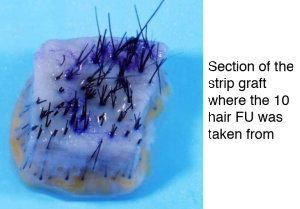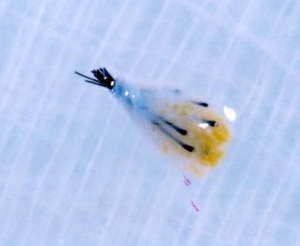Since we invented the FUE (Follicular Unit Extraction’s first scientific paper written in 2002 by Rassman, et. al.), the use of this technique has become more prevalent at each and every year’s convention. What is impressive, is the inroads many physicians have made using this technology in their practice. In 2011, the Artas® Robot was introduced into the hair transplant community and as of this date, 100 robots have been purchased by doctors from around the world. The FUE procedure has become more and more popular by patients wanting a hair transplant. Although we believe that the Strip graft procedure (Follicular unit transplantation) produces better grafts, the public seems to demand more and more FUE procedures and I would’s be surprised that the FUE might reflect between 30-40% of all hair transplant procedure across the world. For the new physician learning about hair transplantation, FUE requires less staff and when it is combined with the commercial ‘hair implanters’, the skills to produce quality work throughout the world seems to be a goal more easily achieved than with the traditional FUT (strip) procedure. There are three elements of the FUE that must be mastered, (1) the actual coring of the grafts from the back of the head with enough skill not to damage or transect these grafts while coring and removing them, and (2) the implantation process itself (carried out with the commercial ‘implanters’ or manual techniques like we use at the New Hair Institute, and (3) the many nuances for quality control that allows the grafts to survive the surgical procedure (drying of the grafts or damage to the grafts on handling and implantation).
One group of Indian doctors showed long hair FUE, just like we do. The ability to do this impressed us, as few doctors I am aware of, have developed the skills for this technique.
I was very impressed with the skills developed in various Asian countries (e.g. India, Thailand, China) where considerable numbers of patients with substandard work was performed in the past. Many videos were presented that showed that the skills for #1 and #2 were comparable to what we are doing at NHI. That was a pleasant surprise. Few of those doctors from third world countries could afford the high price of the Robot (more than $250.000) so the manual skills were essential to develop. I actually viewed more videos this year from India than any previous year.
On the negative side, complications of FUE abound with significant scarring in the donor area, far worse than I have seen before. Infections of the FUE donor area seemed more common than in my experience (where it is rare), and folliculitis of both FUE donor and recipient sites were reported as not uncommon. Clearly, there is more present in these surgeries than ‘meets the eye’ through the video offerings. Doctors clearly will show their best work for the videos. Time will tell just how well these cases turn out. Despite this statement, I believe that FUE will become more and more popular world-wide. We have already seen a significant growth in the FUEs in Europe as fewer and fewer doctors entering the business adopt the Strip technique.
Some doctors are combining both FUE and Strip surgery to increase the donor yield for a hair transplant. This makes sense if the doctors and their teams are skilled in both techniques, but it does push the envelope. I welcome comments from our readership.



